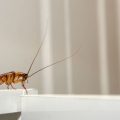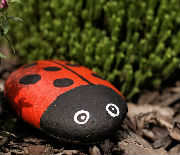
Insects play an essential role in nature—pollinating flowers, breaking down organic waste and supporting ecosystems. But don’t let their size fool you! Some insects have evolved to pose serious threats to human health and safety. From venomous stings that leave you writhing in pain to the spread of deadly diseases, these tiny creatures can wreak havoc on human life.
Here’s our list of the top 10 most dangerous insects in the world, ranked by their aggression, venom, and ability to spread misery.
Table of Contents
11. Horse Fly
The horsefly can cause serious trouble for farmers. They are large and are active during the day. The female horsefly drinks blood from livestock and the bite can very often carry blood-borne diseases that not only can make a domestic animal fall ill, but also infect others.
Horseflies can also make the outdoors very uncomfortable to humans, as they’re not so easy to get rid of, unlike the common house fly. There are even from Ancient Greece telling how horse flies tend to bring people to madness.
Check also:
10. Fleas
Fleas are parasites – they’re not only extremely annoying, but they also live off human and animal blood. They can carry diseases, they reproduce extremely fast (every female lays up to 2000 eggs in their lifespan), and in large numbers, they can easily cause anaemia in their host. If left unattended long enough, your pet can literally be eaten alive.
Check also:
9. Yellowjackets
Yellowjackets are not looking to make friends. These wasps resemble bees, but unlike their pollinating counterparts, yellowjackets may sting you multiple times.
One sting is painful enough, but “threatening” their nest results in an agitated swarm. Their venom can cause severe pain, swelling, and allergic reactions, which can quickly progress into life-threatening anaphylactic shock. These aggressive insects frequently establish underground nests, so be cautious while walking outside.
Yellowjackets are both aggressive and opportunistic. They enjoy raiding your sugary drinks at outdoor picnics, making them an unwanted guest at every cookout.
8. Assassin Caterpillar
The assassin caterpillar (Lonomia obliqua) looks like is soft and fuzzy, but don’t be deceived. This poisonous critter, found in South American jungles, mainly in Brazil, is both deadly and deceiving.
Its tiny, hair-like spines deliver a strong poison that impairs blood coagulation, resulting in serious internal bleeding. Just brushing against one of these caterpillars can be fatal. If victims are not treated, they may develop organ failure or die.
7. Kissing Bug
Kissing bugs got their name from a case where they bit the lip of a sleeping person. In general, they are like any other blood-sucking insect – they are interested in animals and people. The worst part about it is they also transmit a parasite called Trypanosoma cruzi.
The parasite causes change disease and sleeping sickness, both of which can be deadly for humans, killing 12 000 people every year. Domestic animals and pets are just as vulnerable.
6. The Giant Japanese Hornet
The giant Japanese hornet is the largest hornet in the world. No wonder Japan is often associated with giant monsters. This stinging beast of an insect can grow up to 5 cm in length. They are extremely venomous, amounting to 40 human deaths per year. Their venom is capable of dissolving organic tissues.
Not only are they deadly to humans, but they can also cause serious trouble to beekeepers, as the giant Japanese hornet preys on European honey bees. Because they’re the equivalent of mass murderers in the insect world. They can finish up to 40 honey bees in a minute.
5. Tsetse Fly
TseTse flies are one of the deadliest creatures living in Africa. They drink blood from humans and animals alike, and it’s estimated they are responsible for over half a million human deaths. The venom of tsetse flies mostly causes sleeping sickness and can very easily lead to a fatal end.
4. Bullet Ant
The bullet ant isn’t the typical creepy-crawly. Its scientific name is Paraponera clavata, and it produces one of the most excruciating stings in the insect kingdom. Victims frequently describe the pain as comparable to being shot, hence the name.
These ants utilise their venom to defend their colonies deep into the Amazon rainforest, where they live. Although the sting is rarely fatal, the excruciating pain can continue for hours, leaving even the most daring adventurer begging for respite.
Fun fact: In certain Amazonian tribes, getting through bullet ant stings is part of the coming-of-age ceremony. It’s more than just one sting; they’re sewn into gloves, which young men wear to test their strength and durability.
Fortunately, bullet ants are not aggressive until provoked. So, unless you’re digging around their nests, you’re unlikely to incur their anger.
3. Fire Ants
These fiery little culprits are nothing short of terrifying. Fire ants, particularly the red imported kind, are known for their aggressive swarming and burning stings. If you disturb their nests, they will launch a full-fledged assault, inflicting a sting that feels like fire.
Their poison causes scorching agony, swelling, and redness, but the true threat is their sheer numbers. Multiple stings can trigger severe allergic reactions or, in rare situations, anaphylactic shock. Fire ants, which live in the southeastern United States, South America, and parts of Australia, are both resilient and lethal.
2. Killer Bees
Killer bees, also known as Africanized honey bees, are the most aggressive insects in the world. This is self-explanatory since “killer” is part of their name. A group of killer bees can follow a human for two kilometres – that’s at least a thousand bees following you, ready to sting repetitively at any opportunity.
They also mainly target the face and eyes. One single killer bee is not dangerous, but a whole group can easily end your life. Their colonies can count up to 80,000, and once they become agitated, they would attack anything living for the next 24 hours.
Check also:
1. Mosquitoes
You wouldn’t think that a mosquito would be at the top of the list of the deadliest animals on the planet, but they do so without any competition. The Zika virus, dengue, yellow fever, malaria, and other deadly diseases are spread by these flying annoyances, which cause more than a million deaths every year.
Mosquitoes prefer warm, humid settings, and they are most dangerous in tropical areas. Ninety per cent of all malaria deaths occur in Africa. Although a mosquitoes bite might simply produce irritation, the viruses they carry have the potential to cause fatalities as well as chronic illnesses.
Are you dealing with a pest infestation?
You don't have to be alone in the battle against pests. Hire a professional pest expert!
Call usConclusion
While insects are crucial to maintaining balance in ecosystems, some species stand out as a direct threat to humans. From excruciating stings to the silent transmission of deadly diseases, these tiny creatures prove that size doesn’t matter when it comes to danger.
The best defence? Awareness and precaution. Respect their space and stay vigilant in high-risk areas. These dangerous insects might be fascinating, but getting too close could come at a serious cost. Stay safe and insect-aware!
Image source: Apichart Meesri/shutterstock.com










FREAKY